I am facing the following challenge. I need to rotate table data twice over the same column. Here's a screenshot of the data.

I want to have one row for each Item ID containing both the purchasing value and the selling value for each year. I tried doing this by selecting the "year" column twice, formatting it a bit so each selling year gets prefixed with a "S" and each purchasing year begins with a "P", and using 2 pivots to rotate around the 2 year columns. Here's the SQL query (used in SQL Server 2008):
SELECT [Item ID],
[P2000],[P2001],[P2002],[P2003],
[S2000],[S2001],[S2002],[S2003]
FROM
(
SELECT [Item ID]
,'P' + [Year] AS YearOfPurchase
,'S' + [Year] AS YearOfSelling
,[Purchasing value]
,[Selling value]
FROM [ItemPrices]
) AS ALIAS
PIVOT
(
MIN ([Purchasing value]) FOR [YearOfPurchase] in ([P2000],[P2001],[P2002],[P2003])
)
AS pvt
PIVOT
(
MIN ([Selling value]) FOR [YearOfSelling] in ([S2000],[S2001],[S2002],[S2003])
)
AS pvt2
The result is not exactly what I was hoping for (see image below):

As you can see, there are still more than one row for each item ID. Is there a way to reduce the number of rows to exactly one per item? So that it looks a bit like the Excel screenshot below?
